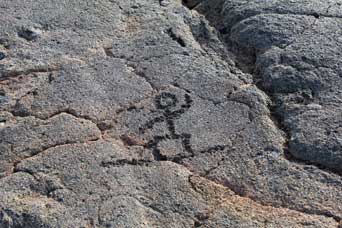The Sport of Kings – The History of Surfing

There is no written or recorded history as to where the art of wave riding or the sport of surfing began. It is however well accepted that the sport was spawned out of the Pacific, although exactly where is up for debate. The Peruvians claim that their earlier decedents nearly 4000 years ago were the first to ride the surf, either standing or on their knees as they brought their fishing crafts made of reads in on the waves after spending time at sea. However the commonly accepted theory of the origins of surfing dates back to the migration of the Polynesian people from Sumatra in Indonesia, spreading through Fiji, the Marquesas, Tahiti and eventually Hawaii. What remains as an excepted fact is that Hawaii became and remains surfing’s world epicenter.
In 1778 we have the first recorded written history of the sport being observed by Captain James Cook’s third expedition to the Pacific on his ships, HMS Discovery and Resolution. History tells us that they stopped at the end of the island chain on their way from Tahiti to the Northwest coast of North America. Captain James Cook and his crew were in search of a passage from the North Pacific to the Atlantic but to their dismay were unable to find an actual route. Upon their return to the North Pacific they stopped of at Kealakekua Bay on the big island of Hawaii . It was there that Cook was killed by the locals when he made a failed attempt to kidnap the islander’s high chief to force the return of a stolen boat.
After Cook’s death in 1779 an active Lieutenant at the time, James King, was made First Lieutenant of the Discovery and was given the task of completing the narrative portion of Cook’s journal. It is in this journal that we find the earliest written account of surfing where Lt. King devoted two full pages to describing the art of surf riding, as it was being practiced by the locals at Kealekekua Bay on the Kona coast of the big island.
The surf, which breaks on the coast round the bay, extends to the distance of about one hundred fifty yards from the shore, within which space, the surges of the sea, accumulating from the shallowness of the water, are dashed against the beach with prodigious violence. Whenever, from stormy weather, or any extraordinary swell at sea, the impetuosity of the surf is increased to its utmost heights, they choose that time for this amusement: twenty or thirty of the natives, taking each a long narrow board, rounded at the ends, set out together from the shore. The first wave they meet, they plunge under, and suffering it to roll over them, rise again beyond it, and make the best of their way, by swimming, out into the sea. The second wave is encountered in the same manner with the first; the great difficulty consisting in seizing the proper moment of diving under it, which, if missed, the person is caught by the surf, and driven back again with great violence; and all his dexterity is then required to prevent himself from being dashed against the rocks. As soon as they have gained, by these repeated efforts, the smooth water beyond the surf, they lay themselves at length on their board, and prepare for their return. As the surf consists of a number of waves, of which every third is remarked to be always much larger than the others, and to flow higher on the shore, the rest breaking in the intermediate space, their first object is to place themselves on the summit of the largest surge, by which they are driven along with amazing rapidity toward the shore. If by mistake they should place themselves on one of the smaller waves, which breaks before they reach the land, or should not be able to keep their plank in a proper direction on the top of the swell, they are left exposed to the fury of the next, and, to avoid it, are obliged again to dive, and regain the place from which they set out. Those who succeed in their object of reaching the shore, have still the greatest danger to encounter. The coast being guarded by a chain of rocks, with, here and there, a small opening between them, they are obliged to steer their board through one of these, or, in case of failure, to quit it, before they reach the rocks, and, plunging under the wave, make the best of their way back again. This is reckoned very disgraceful, and is also attended with the loss of the board, which I have often seen, with great terror, dashed to pieces, at the very moment the islander quitted it. The boldness and address, with which we saw them perform these difficult and dangerous manoeuvres, was altogether astonishing, and is scarcely to be credited.
 While Captain Cook’s journal entry is the first description of the ancient sport of he’e nalu, the Hawaiian word for surfing, recorded by a westerner, the ancient Hawaiins, however, left us more accurate evidence of their sport. Petroglyphs of surfers, carved into lava-rock, and chants that tell the stories of great surfing feats, carried a symbolic lore throughout the generations. Some of these chants are said to date back to as early as 1500 A.D., which leads many to believe that surfing may have begun a long time before in early Polynesian culture. What we do know is surfing in Hawaii was a part of the Kapu system of laws, which held Hawaiian royalty above the commoners on the islands.
While Captain Cook’s journal entry is the first description of the ancient sport of he’e nalu, the Hawaiian word for surfing, recorded by a westerner, the ancient Hawaiins, however, left us more accurate evidence of their sport. Petroglyphs of surfers, carved into lava-rock, and chants that tell the stories of great surfing feats, carried a symbolic lore throughout the generations. Some of these chants are said to date back to as early as 1500 A.D., which leads many to believe that surfing may have begun a long time before in early Polynesian culture. What we do know is surfing in Hawaii was a part of the Kapu system of laws, which held Hawaiian royalty above the commoners on the islands.
What Lt. King documented that day in Cook’s journal was the art, sport and religion of surfing being practiced by the kings and commoners of the island. Before Cook’s crew had made contact with Hawaii, the islanders were ruled by a code of kapu (taboos) which regulated almost every aspect of life. This included where to eat, how to grow food, how to predict weather patterns, how to build a canoe, a surfboard, and how to predict when the surf would rise. Hawaiian society was broken down into two distinct social classes, the royal class and the common class. These two social classes were prevalent in what we would call the line-up as well. There were selected reefs and beaches that were designated only for the kings to surf and there were reefs and beaches that were for the commoners to surf. The commoners generally rode waves on paipo (prone) and alaia (stand up) boards that were an average of 12 feet long. The royal class on the other hand rode their waves on olo boards that were as long as 24 feet.
Many of Hawaiian’s famous chiefs were renowned for their surfing ability including Kaumuali’i, the ruling chief of Kauai’ and Kamahameha. These kings would prove their strength by showing courage and skill in big waves. Rulers used surfing and other Hawaiian sports as competition to maintain their strength, agility and command over the commoners. On the South Shore of Oahu, at Waikiki, there is surf spot today known as Outside Castles, however, the locals call the spot Kalehua to commemorate an incident in which a commoner dropped into the same wave as a Hawaiian chiefess, which was major taboo. It would be similar today to an out-of-towner dropping into the same wave as local at a surf spot in Hawaii or Southern California. The legend has it that t save his skin; he offered a lehua wreath to placate her.
Surfing rituals and the sport itself continued in the Kapu system until the Calvinist Missionaries from New England began arriving in 1820. The missionaries had their own superstitious beliefs that led them to preach that surfing and other Hawaiian sports were hedonistic and a waist of time. By 1890, surfing in Hawaii was almost extinct, with the art of wave riding being practiced in only a few places. Without the dedication of a few Hawaiian kings like David Kalakua, an advocate of all Hawaiian sports, surfing may not have survived to see the 20th century.
More on the origins of surfing to come…
If you would like to learn how to surf contact Endless Summer Camp at (949) 498.7862 or email us at info@endlesssummersurfcamp.com
 Endless Summer Surf Camp
Endless Summer Surf Camp

